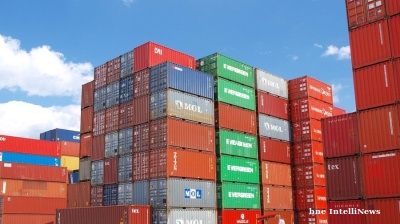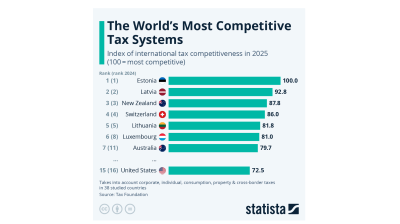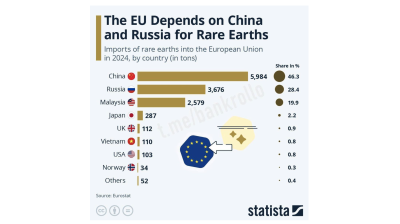The Russian ruble strengthened after the Trump administration imposed oil sanctions on Russia’s leading oil companies, extending a rally that began after the Biden administration imposed oil sanctions on Russia in January.
Analysts say that the two oil majors, Rosneft and Lukoil, are probably repatriating cash to Russia to avoid it being frozen in foreign markets. The two oil majors that were previously sanctioned by the Biden administration, Surgutneftegas and Gazprom Neft, as part of January’s “toughest oil sanctions ever” are also believed to be sending cash home, afraid of getting caught up in the tightening regime.
The ruble was trading at approximately RUB94.5 per dollar on October 22 when the sanctions were announced, but by October 29, the rate had improved to around RUB92.8-93, a gain of about 1.5%-2% over the week.
The ruble's performance is also being influenced by the Bank of Russia’s slowing easing of monetary policy, which cut rates by a “symbolic” 50bp last week to 16.5% in the face of a return of inflationary pressure and persistent expectations of higher inflation by the population.
In its most recent Monetary Policy Report, the CBR forecast for 2025, the average exchange rate is projected in the range of RUB85–RUB95 per dollar, depending on oil prices, export revenues, and external sanctions pressure.
“The ruble exchange rate remains volatile and largely influenced by the trade balance and movement of capital. The Bank of Russia does not pursue a fixed rate but may conduct interventions to limit excessive volatility and maintain financial stability,” the regulator said.
According to Governor Elvira Nabiullina’s October press briefing, the bank expects moderate appreciation pressures in late 2025 if energy exports remain stable and if fiscal tightening proceeds as planned. However, she warned that geopolitical developments could quickly reverse such trends.
The ruble's rally began after the Biden’s sanctions were imposed and has persisted through to October with the currency gaining against the dollar and the euro despite ongoing geopolitical pressure and falling oil prices, which normally drags the value of Russia’s currency down.
On January 26, the US Treasury imposed full blocking sanctions on Surgutneftegas, Russia’s fourth-largest oil producer, and Gazprom Neft, the oil arm of state gas monopoly Gazprom. On October 22, Trump added the state-owned Rosneft and privately-owned Lukoil, which together account for two thirds of Russia's oil exports and half its production.
However, analysts say that the sanctions will not have a long-term impact on Russia’s export business, as Russia’s partners, predominantly India and China, are proficient at finding workarounds.
Nevertheless, the sanctions will have an effect as they restrict all transactions with these companies by US persons and freeze any of their assets held under US jurisdiction.
In response, the Russian oil companies are believed to have accelerated the repatriation of offshore funds, converting holdings into rubles and depositing them in domestic accounts. In addition, this week Lukoil said it would sell its foreign assets on October 28. The inflow of foreign currency is helping to prop up the ruble, even as Russia’s broader economy remains under pressure from war-related spending and restricted export revenues. In general, the sanctions on oligarchs and leading Russian firms have resulted in large inflows of capital to Russia to avoid being targeted by sanctions, providing Russian President Vladimir Putin with a fresh source of funds for development of the Russian economy in wartime.
Russia’s Finance Ministry and the Bank of Russia have not commented publicly on the currency's movement. However, in recent months, the central bank has taken a more interventionist stance, resuming foreign currency sales.
Despite international sanctions, Russia’s current account has remained in surplus although it has fallen sharply from 2022 highs of over $200bn and is projected to be $48bn by the end of the year, according to the CBR’s latest macroeconomic outlook, based on an average oil price assumption of $65 per barrel.
The ruble has become unstable since the war started in 2022, with the Kremlin increasingly relying on financial and regulatory tools to manage its valuation.
Data

Russia's central bank cuts rates by 50bp to 16.5%
The Central Bank of Russia (CBR) cut rates by 50bp on October 24 to 16.5% in an effort to boost flagging growth despite fears of a revival of inflationary pressure due to an upcoming two percentage point hike in the planned VAT rates.

Ukraine's trade deficit doubles to $42bn putting new pressure on an already strained economy
Ukraine’s trade deficit has doubled to $42bn as exports fall and imports balloon. The balance of payments deficit is starting to turn into a serious problem that could undermine the country’s macroeconomic stability.

BYD surpasses Tesla to become EV market leader – Statista
While Chinese manufacturer BYD already pulled ahead of Tesla in production volume last year, with 1,777,965 battery electric vehicles (BEV) produced in 2024 (4,500 more than Tesla), the American manufacturer remained ahead in sales.

Estonia has the world’s most competitive tax systems for the 11th year in a row – STATISTA
The Tax Foundation has released its International Tax Competitiveness Index which highlights the most competitive tax rates in different countries around the world. For the 11th consecutive year, Estonia had the highest score in the index.




